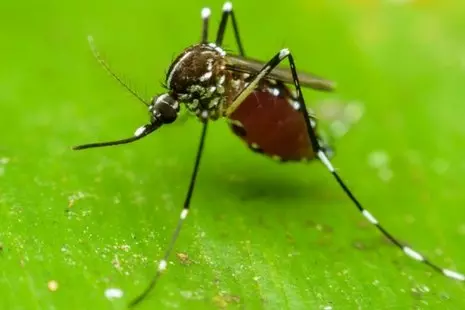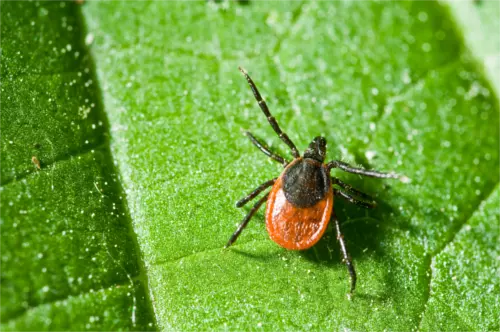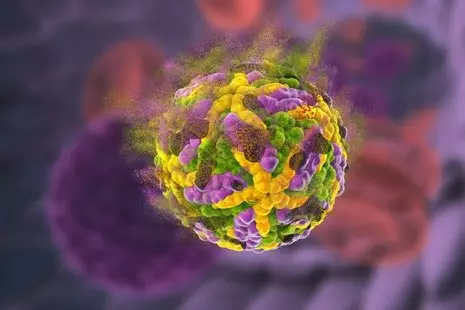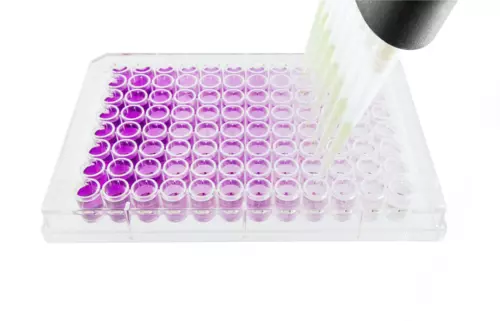You have no items in your shopping cart.
Vector-Borne and Tropical Diseases
We have the tools to help you develop new assays
-
Vector-borne diseases account for more than 17% of all infectious diseases, causing more than 700,000 deaths annually.1
-
More than 3.9 billion people in over 128 countries are at risk of contracting dengue, with 96 million cases estimated per year.1
-
Malaria causes more than 400,000 deaths every year globally, most of them children under 5 years of age.1
-
Other diseases such as Chagas disease, leishmaniasis and schistosomiasis affect hundreds of millions of people worldwide.1
| • Alphavirus | • Japanese Encephalitis Virus | • Nipah Virus |
| • Borrelia burgdorferi (Lyme disease) | • Leishmania | • Tick-borne Encephalitis virus |
| • Borrelia garinii | • Leptospirosis | • West Nile Virus |
| • Chagas | • Malaria | • Yellow Fever Virus |
| • Chikungunya | • Marburg Virus | • Zika Virus |
| • Dengue | • Mayaro Virus | |
| • Ebola | • Newcastle Disease |
Vector-Borne and tropical diseases occur principally in the tropics with the term ‘tropical disease’ relating to those that thrive in hot, humid conditions such as leishmania, Chagas, Ebola, Marburg virus and many more. Vector-Borne diseases are further categorised by the fact that they’re transmitted between Humans by a vector that is typically a blood-sucking arthropod such as a mosquito, tick or flea. Examples of vector-borne diseases include Dengue fever, West Nile Virus, Lyme disease, and malaria.

Mosquito. A vector for tropical diseases such as Dengue and malaria.

Deer tick (Ixodes scapularis) a vector for Lyme disease.
In practise, these diseases are most prevalent in some of the poorest regions of the world in peoples who live in remote, rural areas, urban slums or conflict zones. The geographical location of these diseases makes it further difficult to treat and control outbreaks of these diseases, manage the underlying infection route and vaccinate, where possible. It is therefore essential that we can develop low-cost, sensitive, means of diagnosis with low-cross reactivity to other infectious diseases so early diagnosis is possible and treatment most effective.
To assist in this endeavour, Biorbyt offer a wide range of antigens and antibodies to assist researchers in the development of tests such as solid-phase, dip-sticks (ELISA), particle agglutination and lateral flow.
Validated, Matched antibody pairs
| Disease | Capture | Detection |
|---|---|---|
| Dengue Virus NS1 | orb55887 | orb55886 |
| orb55887 | orb107981 | |
| orb107981 | orb107978 | |
| orb107981 | orb107979 | |
| orb107981 | orb107980 | |
| Ebola NP | orb421067 | orb421068 |
| Japanese Encephalitis Virus NS1 (JEV NS1) | orb525776 | orb52577 |
| orb525776 | orb525778 | |
| orb525776 | orb525779 | |
| orb544441 | orb52577 | |
| orb544441 | orb525778 | |
| orb544441 | orb525779 | |
| Malaria HRP-2 | orb316676 | orb316675 |
| Malaria pLDH | orb316685 | orb316686 |
| orb316684 | orb316686 | |
| Malaria (Specific P. falciparum HRP-2) | orb23592 | orb23594 |
| orb23592 | orb23593 | |
| orb316687 | orb316688 | |
| Nipah Virus G protein | orb421078 | orb421077 |
| Disease | Capture | Detection |
|---|---|---|
| Yellow Fever NS1 | orb55885 | orb55880 |
| orb55885 | orb55881 | |
| orb55885 | orb55884 | |
| orb55885 | orb55883 | |
| orb55885 | orb402858 | |
| orb55880 | orb55884 | |
| orb55880 | orb55881 | |
| orb55880 | orb402858 | |
| orb55880 | orb55883 | |
| orb402858 | orb55884 | |
| orb402858 | orb55883 | |
| orb402858 | orb55881 | |
| orb55881 | orb55884 | |
| orb55881 | orb55883 | |
| orb55883 | orb55884 | |
| Zika Virus NS1 | orb371979 | orb371980 |
| orb378455 | orb378456 | |
| orb378456 | orb378456 | |
| orb378455 | orb383474 | |
| orb378456 | orb383475 | |
| orb383474 | orb378456 |
Developing your own assay
Tested in ELISA, IFA, LF, often WB or IHC-P, we have antibodies and antigens that you can test together to optimise your own immunoassay to these devastating diseases. Search our website, or ask us at [email protected]to find the right products for your work:
| Antibodies | Antigens |
|---|---|
| Alphavirus | |
| Borrelia burgdorgeri | Borrelia afzelii, burgdorferi and garinii |
| Chikungunya Virus and Envelope protein | Chagas (Trypanosoma cruxi) |
| Dengue Virus and NS1 | Chikungunya Virus |
| Ebola Virus | Dengue Virus Type 1, Type 2, Type 3 & Type 4 |
| Japanese Encephalitis Virus (JEV) and NSA | Ebola Virus |
| Leptospira biflexa | Leishmania |
| Malaria, plus Plasmodium falciparum and | Japanese Encephalitis Virus |
| Plasmodium vivax | Mayaro Virus |
| Marburg Virus | Nipah Virus |
| Newcastle Disease Virus | Malaria (Plasmodium falciparum and vivax) |
| Nipah Virus G protein | Tick-borne Encephalitis Virus |
| West Nile Virus, Envelope protein | West nile Virus |
| Yellow Fever Virus NS1 | Yellow Fever |
| Zika virus, NS1 and Envelope protein | Zika Virus |
Tips and tricks for working with Flaviviruses in EIA assays
Many Vector borne diseases are caused by viruses from the genus Flavivirus of the family Flaviviridae. This family comprises over 70 viruses including dengue (DEN) viruses, Japanese encephalitis (JE) virus, St. Louis encephalitis (SLE) virus, and yellow fever (YF) virus many of which are important human pathogens. 2
As all Flaviviruses are antigenically related to various degrees, it is essential that when developing an immunoassay, the antibodies used are specific to the disease of interest. High genetic homology between the different Virus species means that development of antibodies with no cross-reactivity to other flavivirus caused diseases is difficult.

Zika virus

EIA assay
Flaviviruses are simple enveloped viruses containing single-stranded RNA associated with a capsid protein. All share symmetry, appearance and their genomes encode a single, large polyprotein that is proteolytically processed to yield structural domains - E (Envelope), prM (precursor of membrane(M)) and Capsid protein. They also contain several non-structural proteins (NS) such as NS1, NS2, NS2b, NS3, NS4a, NS4b and NS5.3
It is important to note that the dominant protein is the Envelope protein (E), which is present on the surface of the viron. It contains highly conserved regions and so antibodies to Envelope proteins are often cross-reactive to other serotypes and diseases. The NS1 protein is a glycosylated, membrane-bound secreted glycoprotein that has replicative and evasive functions. NS1 antigens can be detected early on in infection and are an excellent target for early diagnostic tests. NS1 is serotype-specific and so detection of NS1 antigens can enable virus serotyping by ELISA.
In order to improve the specificity of an assay, it is vital to remove cross-reacting antibodies that can lead to false positives by binding the antigen non-specifically. This can be achieved via defined epitope blocking ELISA’s that permit differentiation of flaviviral infections by targeting epitopes on NS1 or E proteins. If low concentrations of unconjugated antigens from the potentially cross-reactive serotypes are included in the assay, these will block binding of the cross-reactive antibodies to the target antigen, thereby increasing assay specificity.
References
Vector-borne diseases. Available at: https://www.who.int/news-room/fact-sheets/detail/vector-borne-diseases. (Accessed: 25th January 2019)
Kuno, Goro, Chang, G.-J. J., K. Richard, T., Nick, K. & C. Bruce, C. Phylogeny of the Genus Flavivirus. J. Virol. 72, 73–83 (1998).
Heinz, F. X. & Stiasny, K. The Antigenic Structure of Zika Virus and Its Relation to Other Flaviviruses: Implications for Infection and Immunoprophylaxis. Microbiol. Mol. Biol. Rev. 81, e00055-16 (2017).

